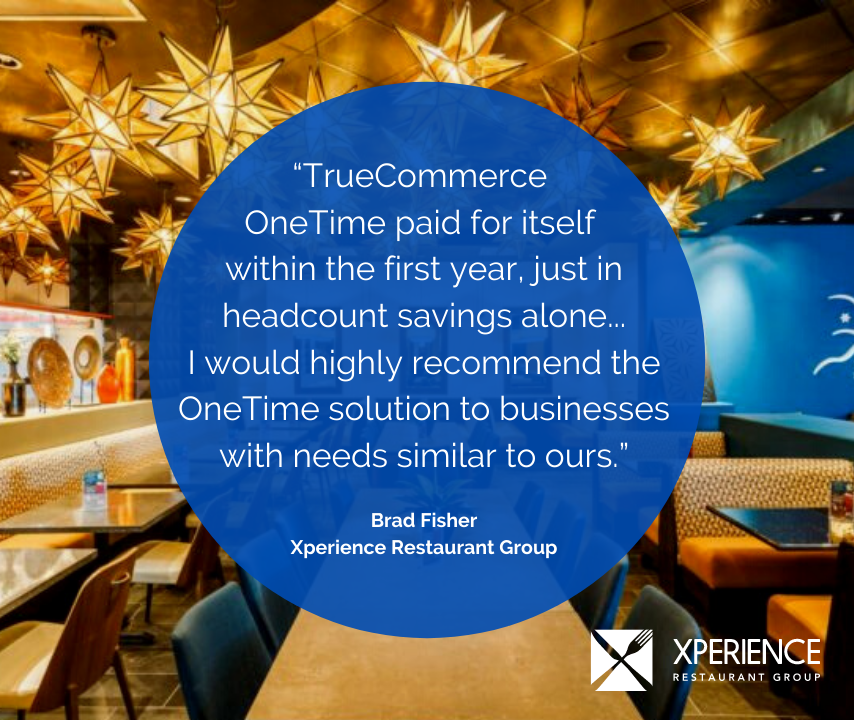The Top 4 Supplier Onboarding Challenges and How to Solve Them

December 8, 2021
Successfully onboarding a new supplier relies on the coordination of a lot of moving parts. In an ideal scenario, you’d select a supplier and your team would have them fully onboarded within just a few days. But the fact is, this is rarely the case. From technology gaps to compliance issues, to inefficient back-and-forth processes, the challenges to supplier onboarding can quickly add up. As a result, if you’re handling your supplier collaboration on your own, onboarding might take as long as six months for some suppliers.
That’s six months of waiting to get new products to market. Six months of lost sales potential, or worse, six months waiting for parts or raw materials you need to make your products. That’s an arrangement that isn’t ideal for either party. So, the question is, Why does this happen? And what can we do to optimize and reduce onboarding time? Keep reading to find out more about onboarding best practices and challenges.
What is Supplier Onboarding?
First, let’s address and clarify what we mean by “supplier onboarding.” To put it simply, supplier onboarding is the process of incorporating a new supplier into your business’s workflow, especially with regards to important trade documents like orders, ASNs, and invoices. During onboarding, the supplier is provided with guidance on how to send compliant information, which you can send to your backend systems either automatically or by hand. At the same time, the onboarding process is when you and supplier agree on the format of these transactions—be they EDI transactions, XML documents, flat files, or PDFs. Onboarding is complete once the supplier is fully set up to accept and respond to the orders you send.
The process may sound straightforward, but every supplier brings its own set of unique vendor onboarding challenges. These can range from time & resource consumption, security risks, technical gaps, and compliance checks. Luckily, with the right technology and onboarding best practices, you can turn a prospective vendor into an active supplier quickly and efficiently.
Supplier Onboarding Challenges
1. Supplier Onboarding is Time (and Energy) Consuming
Time is money, and when supplier onboarding is handled manually, it can wind up stuck in limbo for months at a time, causing you to miss out on sales. Working with hundreds (or, for some larger companies, thousands) of suppliers means potentially working with hundreds of different supplier types with varying levels of technical capabilities. This is especially true for larger companies who have to coordinate layers and layers of approval flows across several departments including legal, compliance, security, procurement, finance, and more. There are negotiations and renegotiations of contracts, and more than likely there are different systems and data sources that need to be reconciled. Each of these pieces takes time, energy, and team members.
2. Security Risks in Vendor Onboarding
Running a business successfully hinges strongly on mitigating risk. These negative consequences start at the supplier level and extend all the way to how your customers interact with your brand, so it’s imperative that you take an approach that eliminates these potential issues, especially with respect to security. In 2016, businesses spent an average of $10 million dollars in response to vendor-related security breaches1. You can prevent this by ensuring that all your supplier data is secure, which protects you and your customer’s PII (personal identification information), and keeps your competitors from obtaining information they shouldn’t, such as whom you’re buying from, how much, and at what price.
3. Gaps in Technical Maturity
True supplier collaboration usually entails more than just getting them set up to receive and send order documents. They may have their own solutions or data sources or, in some cases, no solutions at all. While it would be ideal for every supplier to come in with an existing electronic data interchange (EDI) solution, some suppliers, especially newer or smaller ventures, might not have one in place.
Less technically mature suppliers might rely on email subject headers, sending PDFs, sharing spreadsheets, or faxing hard copies, which can quickly overwhelm your team from an information management perspective. Then you have to take into account the actual processing of that supplier data and reconciling it with your solutions, etc. That opens the door to inconsistencies and potentially even incomplete or worse, incorrect information that can result in delays, fulfillment mistakes, and even chargebacks.
4. Compliance Checks
We don’t need to state the importance of compliance across your business and supply chain. But when it comes to keeping track of compliance across hundreds of suppliers, it’s easy to see why that becomes a monumental task. Negligence in this area could lead to a slew of negative consequences including disruption in operations, product recalls, customer cancellations, legal action, and reputational damage.
This is what makes a proactive approach necessary, and why you should establish your compliance guidelines to include how your business will communicate, the type of data, the secure methods by which data like ASNs and B2B payments can be sent, and so on. The clearer you make your guidelines, the less room there is for a compliance breach, so your team should take the time to clarify even as far down as document format, including what information to include in each document, the order, timeframes, and more. This process of checking compliance should continue beyond onboarding as part of ongoing supplier management.
Solutions to Supplier Onboarding Challenges
1. Save Time and Headaches with Outsourcing
You can save time and headaches across your various teams by outsourcing the supplier onboarding process. An established business could handle every step and, while outsourcing may come at a cost, it becomes cost-effective to get your product to market sooner. Acting as an extension of your team, such a firm could help:
- Handle the more arduous and complicated onboarding tasks
- Open your entire supplier network to quickly exchange digital documents
- Free up your IT department’s time and resources
- Develop onboarding guidelines and technical specifications
- Educate and ensure suppliers aren’t delayed by lack of information
- Increase the speed and accuracy of information exchange
- Improve the success rate of supplier onboarding
- Offer ongoing support throughout and beyond the onboarding process
2. Streamline Supplier Compliance Management
Supplier compliance management is another task that can be efficiently outsourced to providers who can do the heavy lifting by leveraging a combination of highly effective, cloud-based technology with managed services, again acting as an extension of your team. Rather than bogging down your highly trained IT professionals with compliance work, your outsourced partner can step in and handle all of it, including the day-to-day, EDI-related supplier issues, validation requirements, etc. This grants you the opportunity to let your IT team focus on their priorities and will prevent events like suppliers phoning your Accounts Payable department if their invoice fails validation criteria. Instead, the concerned parties can speak to the firm for rapid resolution.
3. Leverage Supplier Enablement through a Supplier Portal
A supplier enablement solution offers a supplier portal, plus a managed service designed to streamline the information-sharing process while speeding up onboarding and strengthening your partnerships.
Rather than juggling a barrage of PDFs, email attachments, faxes, and so on, suppliers can simply access the portal to input their data. The portal then translates and integrates data into your back end business systems, without requiring smaller suppliers to invest in a fully-fledged EDI solution. This solution can be used to automate the document sharing process and has the added benefit of a completely transparent supply chain and transaction log. In fact, some solutions are able to track supplier KPIs, onboarding status, and more. With this level of transparency, it not only allows you to track order status, inbound deliveries, and invoices; it also serves to create a better, more consistent experience for your customers.
4. Centralize Your Requirements and Processes
The natural answer to highly varied, inconsistent processes is to standardize them within your business for your onboarding suppliers to adopt. By focusing first on supplier requirements, your business will have a clearly defined set that allows your onboarding process to run more smoothly. These requirements can clearly and preemptively address criteria relating to your compliance, legal, security team, and so on. This is yet another area in which an experienced firm could potentially help with your supplier management and with the process of creating clear, standardized workflows consistent across your business.
In addition to helping your onboarding and operations run more smoothly, standardized processes also allow your suppliers to learn how to work with your business. If there is any need to further educate or inform, your standardized information can be made available to them. These consistent processes also empower your business with remarkable visibility, which you can leverage to ensure you are presenting complete, correct information to your potential buyers.
What Steps Can You Take to Overcome Your Supplier Onboarding Challenges?
Onboarding suppliers doesn’t have to be as complicated or time-consuming as it may seem. If you’re up against more than one of these challenges, you can prioritize them according to your business’s most urgent needs. And, if you’re looking for an established firm with years of experience in solutions and managed services to help with your supplier onboarding and management, contact us today.
eBrief: Supplier Enablement is The Key to Overcoming Supply Chain Challenges
Learn how you can uncomplicate every transaction with connected supplier management technology to strengthen your vendor relationships and accelerate your ordering process.
About the Author: Brian Lindner is the Director of Field Marketing at TrueCommerce. He has spent the last 15 years in B2B project management and marketing. His focus is on Vendor Managed Inventory and related eCommerce solutions that help companies save time through automation. Brian enjoys spending time with his wife and 2 kids and in his spare time brews delicious craft beer with his friends.
Share this post:
Categories
Stay ahead of the competition
Get expert supply chain insights delivered directly to your inbox weekly.
